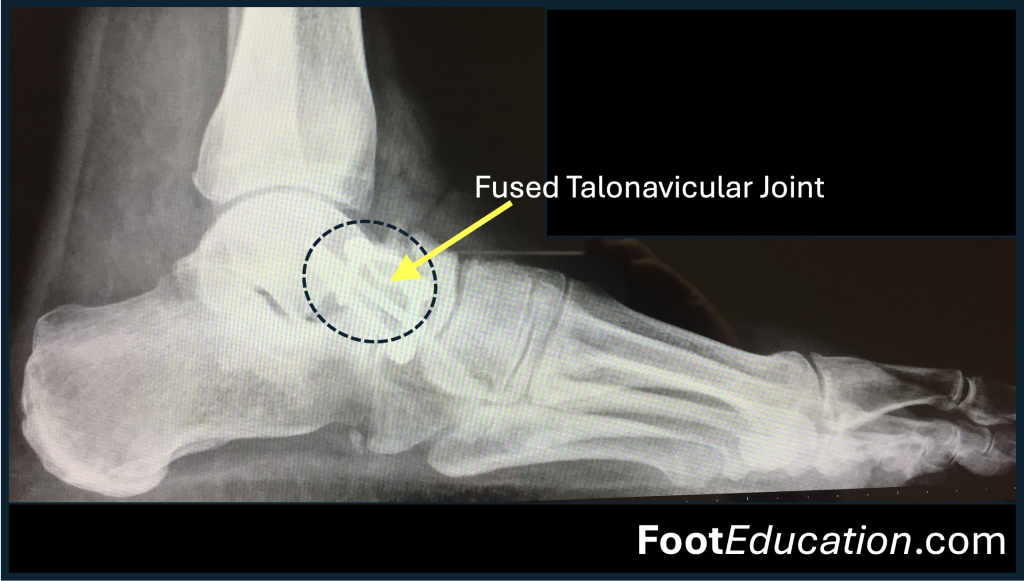Talonavicular Fusion (Talonavicular Arthrodesis)
Indications for Performing a Talonavicular Fusion
Arthritis of the talonavicular joint in the midfoot can create considerable pain and stiffness. If conservative treatment does not lead to acceptable results a surgical fusion of the arthritic talonavicular joint may be beneficial. A talonavicular fusion involves getting the two bones that make up the arthritic joint to heal together thereby getting rid of the joints and its ability to allow motion –but also its ability to cause as much pain.
Surgical Treatment of a Talonavicular Fusion
To perform a talonavicular fusion the joint is first prepared for fusion by removing any remaining cartilage and creating two bony surfaces that can heal together. The talonavicular joint is then held rigidly together using metal hardware such as screws or plates (Figure 1) until the two bone ends have fused together -usually many weeks. Success of this procedure requires that the bone ends heal together. When successful, a talonavicular fusion is typically a very effective and durable pain-relieving procedure. The procedure does, however, restrict future motion from that joint and this can make the foot somewhat stiffer—but few patients consider this an issue given the excellent long term pain relief that can be expected from this operation. Furthermore, by the time the joint wears out to the point of needing a fusion, it is often already very stiff.
A bone graft procedure, in which a bone or bone substitute is taken from elsewhere and placed in the talonavicular joint, is often done in addition to the talonavicular fusion procedure to increase the fusion rate (decrease the rate of non-union – the bone note healing). Sometimes it may also be necessary to fuse other joints to improve surgical outcomes (e.g. the nearby subtalar, calcaneocuboid or cuneiform-navicular joints). The fusion procedure eliminates arthritis in THAT joint—but does not eliminate arthritis or deformity in other joints.

Recovery
Recovery from a talonavicular fusion generally requires a minimum of 6-12 weeks in a short leg cast to allow the bones to have the best chance of fusing together. Patients are usually started in a non-weight-bearing setting and gradually advanced to partial and then ultimately to full weight-bearing over the course of this recovery. Following cast removal, patients can begin graduated walking in a removable boot, such as a CAM walker. At this point, physical therapy should begin, with an emphasis on strengthening, swelling control, improving the range of motion (ROM) of the other non-fused joints, and gait retraining. Patients are often dramatically better by 12 weeks postoperatively, although it will generally take upwards of a year or more to reach the point of maximal recovery.
Potential Complications of a Talonavicular Fusion
In addition to potential complications that can occur following any orthopaedic surgical procedure, there are certain complications which can be considered more specific to talonavicular fusion surgery. Non-union is the most common of these, due to the poor blood supply in that region and the amount of force applied to that area when walking. Another potential complication specific to surgery performed on patients who have rheumatoid arthritis is an increased rate of soft tissue problems such as wound healing or infection. This is because patients who have rheumatoid arthritis often have poorer soft tissues and/or may be immunocompromised from having taken multiple anti-rheumatoid drugs over time to control the systemic disease.
Edited November 13th, 2024